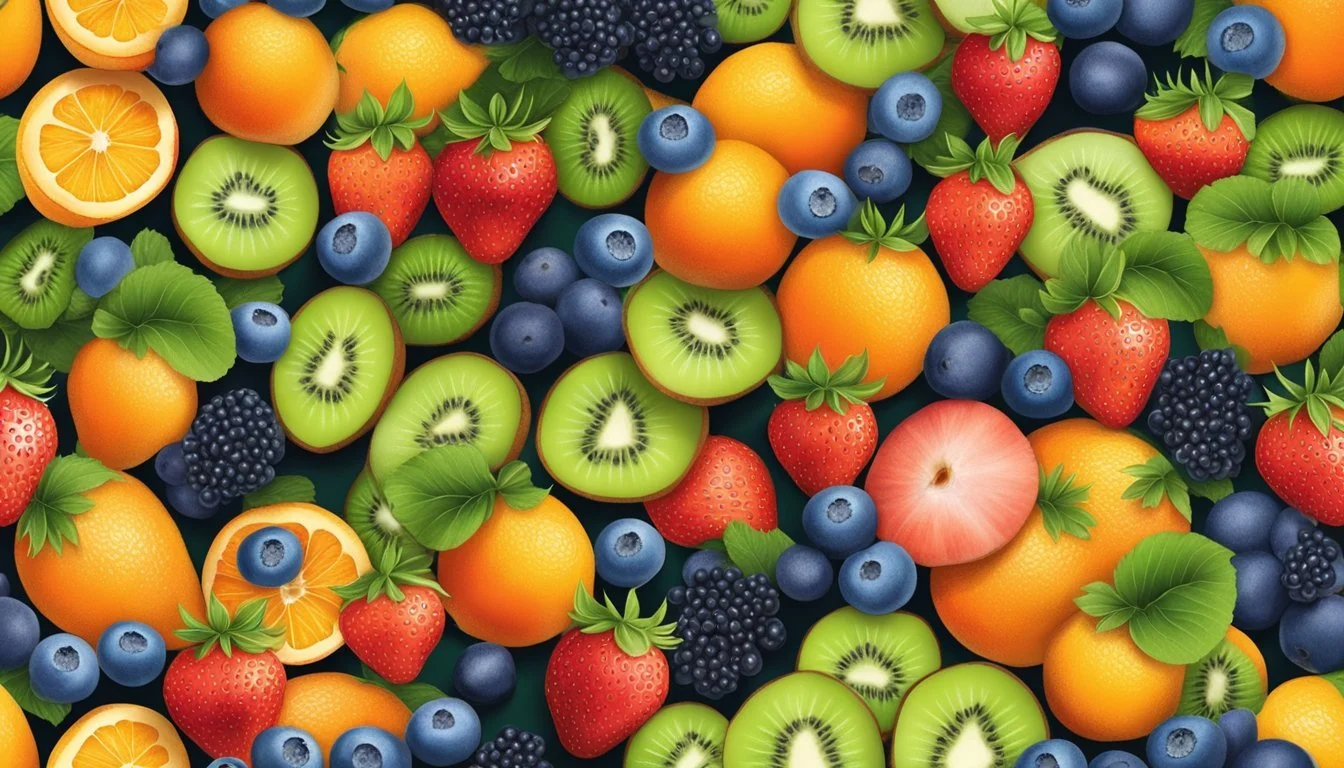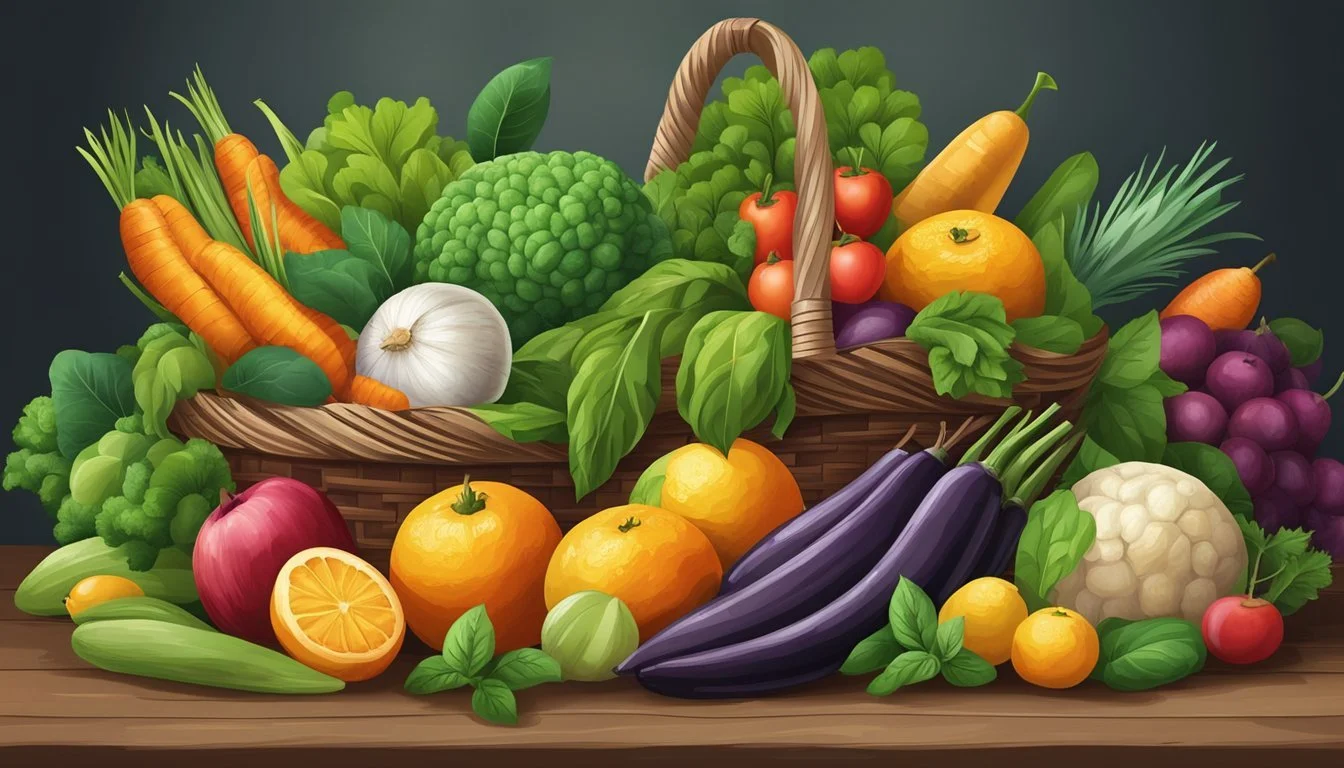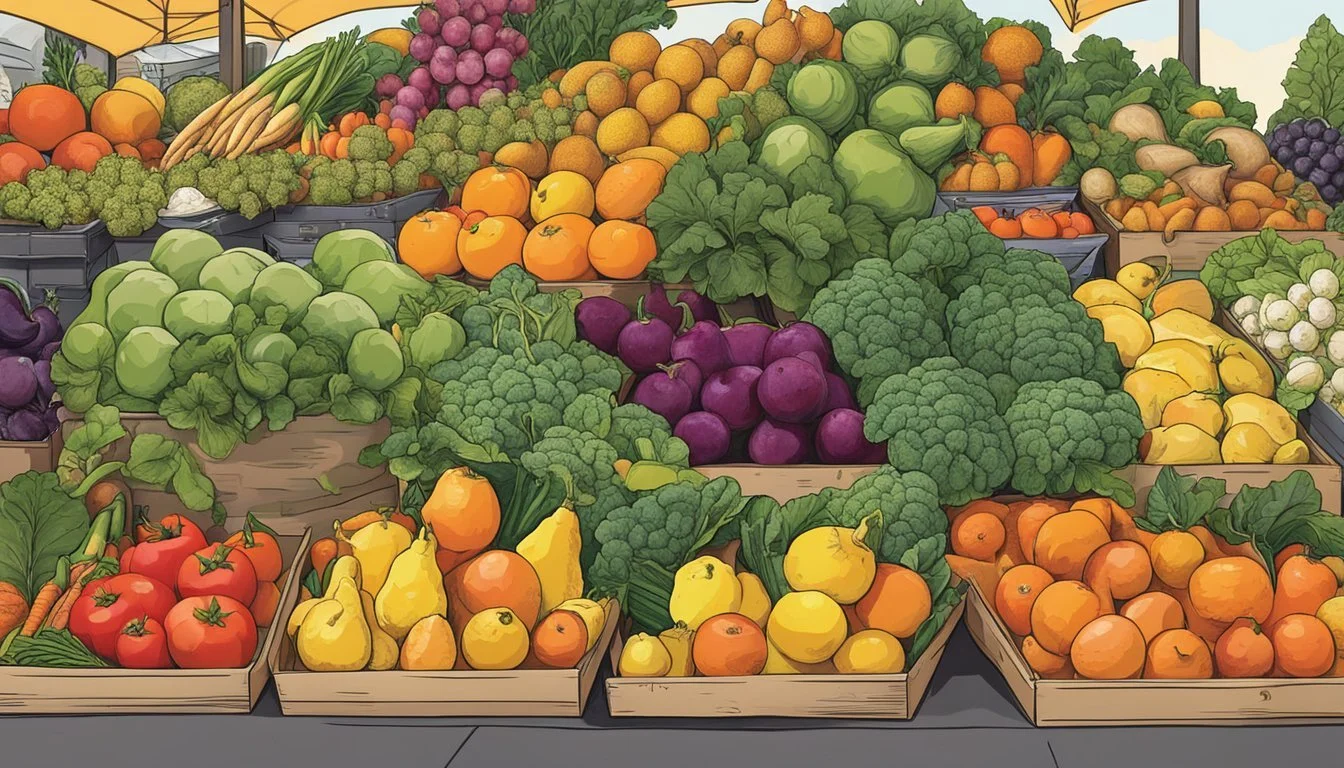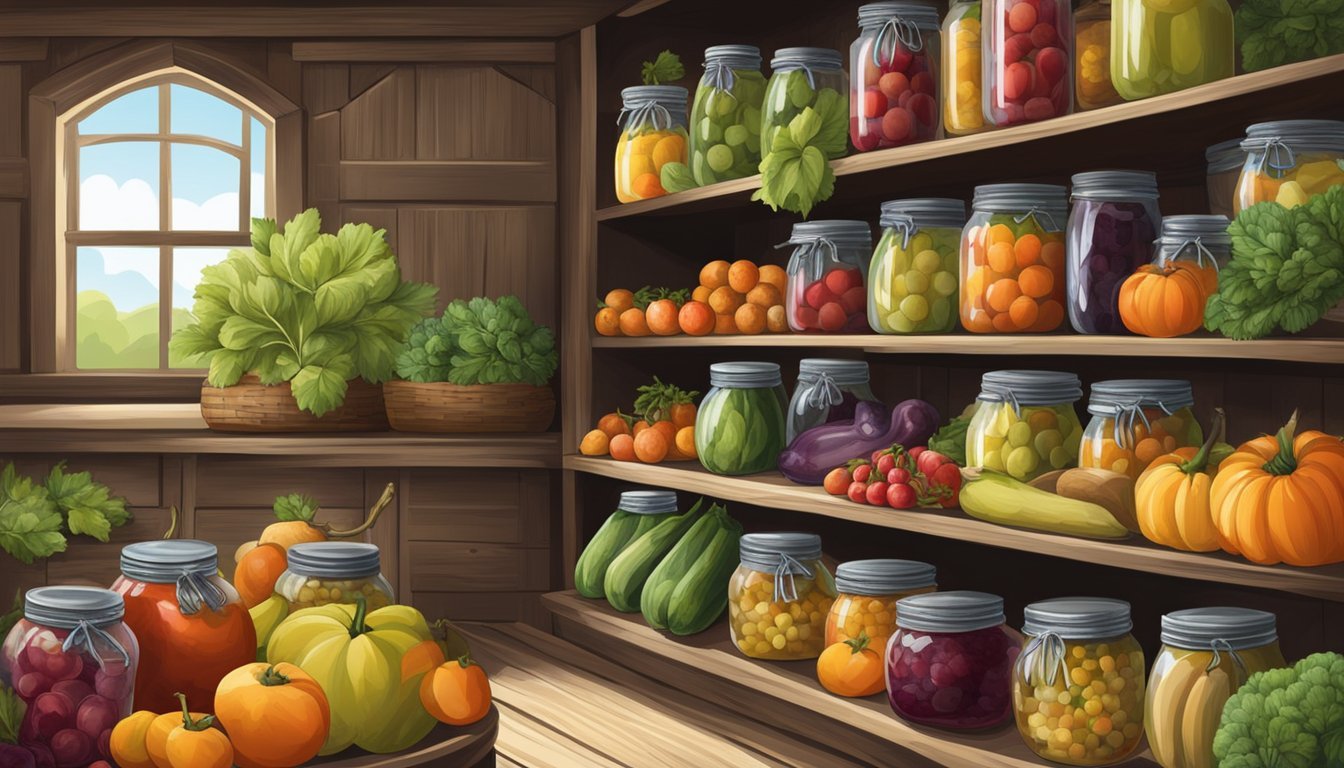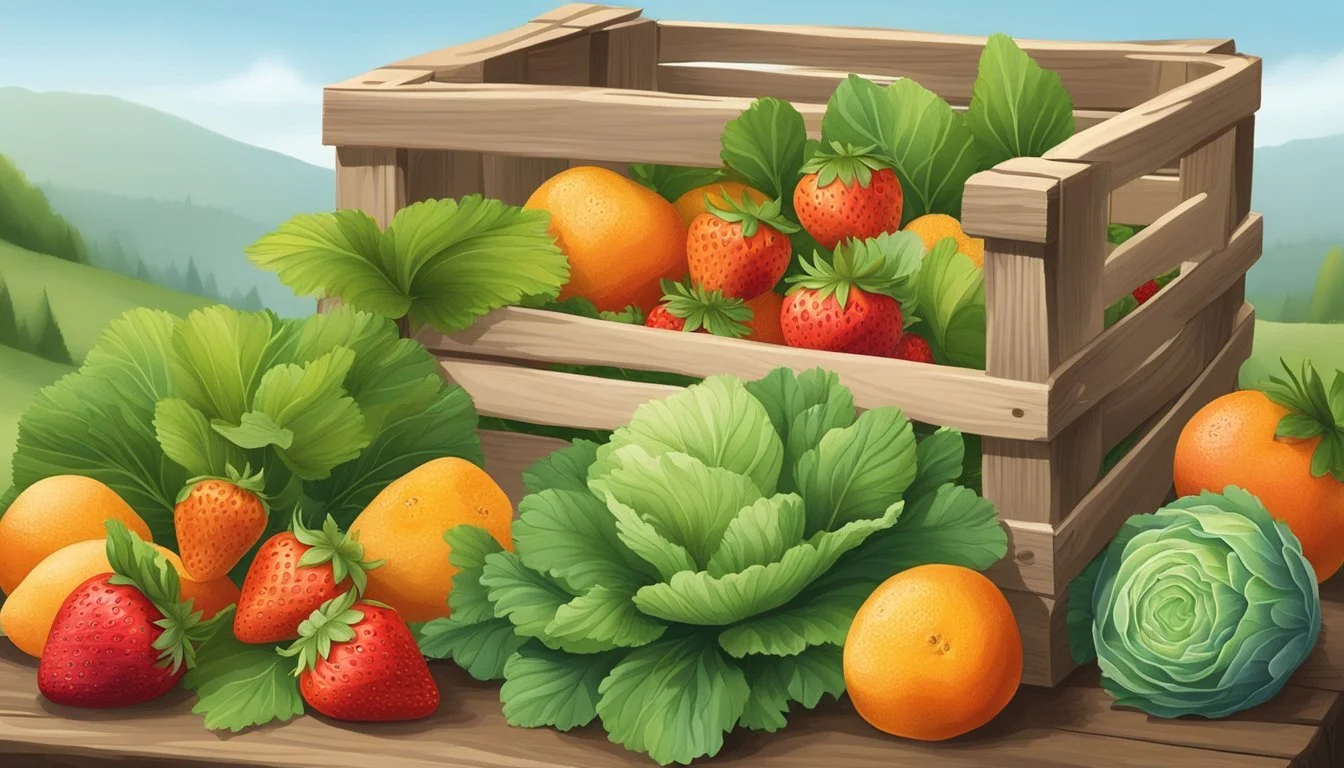Louisiana Seasonal Fruit & Vegetables in February
A Fresh Guide to Winter Produce
This Article is Part of our Louisiana Seasonal Fruit & Veg Calendar
February in Louisiana brings a distinct selection of fruits and vegetables that thrive in the state's mild winter climate. Shoppers can find a variety of fresh produce, with vegetables often taking center stage during this month. Root vegetables, such as beets (how long do beets last?), are typically harvested, bringing earthy flavors to the table. Greens like broccoli (how long does broccoli last?)and Brussels sprouts (how long do brussels sprouts last?)are also abundant, adding vibrant color and nutritional value to meals.
Local farmers' markets display the season's bounty, providing consumers with options that are not just fresh, but also support the local agricultural community. Strawberries begin to make their appearance, hinting at the sweetness of spring to come. This period is characterized by a mix of the last of winter's offerings and the early signs of spring produce, ensuring that the local cuisine remains varied and seasonal.
Understanding Louisiana's Growing Seasons
Louisiana's climate is characterized by long, hot summers and mild winters. This warm environment sets the stage for a year-round growing season with a variety of produce reaching peak freshness at different times. The state's agriculture takes advantage of the subtropical climate to provide a bountiful harvest that shifts throughout the year.
February in Louisiana is notably vibrant for certain vegetables and fruits. During this month, the state yields produce that thrives in cooler weather but still requires the mild temperatures that southern winters offer. Residents and visitors alike anticipate the chance to enjoy the freshest local offerings.
Here is a snapshot of produce that is typically in season in Louisiana during February:
Vegetables:
Beets
Broccoli
Brussels sprouts
Cabbage
Carrots (how long do carrots last?)
Cauliflower (how long does cauliflower last?)
Greens (e.g., mustard (how long does mustard last?) and collard)
Lettuce
Radishes
Turnips
Fruits:
Strawberries
Utilizing a seasonal calendar, consumers can navigate through the months, identifying which produce is reaching its peak. For those who prioritize fresh, locally sourced ingredients, understanding this calendar is key. The embrace of what's in season not only supports local farmers but also ensures that dishes prepared with these ingredients are of the highest quality and flavor profile.
Seasonal Fruits Available in February
February in Louisiana offers a variety of fresh fruits that are in season, providing rich flavors and nutritional benefits. Shoppers can look for several citrus fruits that are particularly good during this time of year.
Citrus Fruits: Citrus fruits are abundant in February, with grapefruits, oranges, and lemons readily available. These fruits are known for their high vitamin C content and refreshing taste.
Grapefruit: With its bittersweet flavor, grapefruit is a versatile fruit that can be enjoyed on its own or used in salads and desserts. Louisiana grapefruits are juicy and at their peak ripeness in February.
Oranges: Oranges are another popular citrus fruit during this month. They're perfect for a quick snack, juicing, or as an addition to various recipes. Varieties such as navel oranges are commonly found, offering sweetness and juiciness.
Lemons: Known for their tartness, lemons are used to enhance the flavor of both sweet and savory dishes. They're also a key ingredient in lemonade, dressings, and marinades. February yields high-quality lemons with an ideal balance of acidity and zest.
Shoppers seeking these fruits can expect freshness and flavor that come with seasonal produce. Local markets and stores typically stock these fruits, supporting Louisiana growers and providing an opportunity to enjoy fresh, in-season produce.
Seasonal Vegetables Available in February
In February, Louisiana's cooler temperatures allow for a bounty of fresh vegetables that are both nutritious and flavorful. Gardeners and consumers can find an abundance of leafy greens during this time, which includes spinach, kale, and various types of lettuce. These greens are known for their vitamins and minerals, making them a staple for healthy winter diets.
Broccoli and cabbage are also at their peak, offering robust flavors and textures suitable for a variety of culinary applications. They both belong to the cruciferous family, recognized for their potential health benefits, such as antioxidant properties.
Root vegetables like carrots and radishes are readily available in February, providing sweetness and a crisp bite ideal for salads, stews, and side dishes. Carrots are particularly versatile, known for their beta-carotene content, while radishes add a peppery note to both raw and cooked dishes.
Furthermore, potatoes continue to be a reliable crop with their long storage life, even as the new harvest arrives. They can be prepared in countless ways, from roasting to boiling to mashing, fitting perfectly with the hearty meals commonly enjoyed during the colder months.
The following table summarizes the vegetable offerings for February in Louisiana:
Vegetable Description Uses Spinach Leafy green, vitamin-rich Salads, sautés, smoothies Kale Nutrient-dense green Soups, chips, stir-fries Lettuce Various types, crisp and refreshing Salads, wraps, sandwiches Broccoli Crunchy, high in fiber Steamed, roasted, raw Cabbage Dense leaves, slightly bitter Slaws, soups, stir-fries Carrots Sweet, high in beta-carotene Snacks, roasts, soups Radishes Crisp texture, peppery flavor Salads, garnishes, roasts Potatoes Starchy and versatile Mashed, baked, fried
Consumers should take advantage of Louisiana's fresh, in-season vegetables, which are not only better in taste but also often more affordable and locally sourced.
Cooking and Preparation Tips for February Produce
In February, Louisiana's selection of produce may lean more toward robust vegetables and hearty roots, providing a variety of flavors and textures for the seasonal cook. Here are some preparation tips:
Sweet Potatoes (What wine goes well with sweet potatoes?): A versatile and sweet root vegetable, they can be roasted, mashed, or made into soups. To enhance their natural sweetness, they should be roasted slowly or can be cubed and steamed for a healthier option.
Vegetables:
Collard Greens (how long do collard greens last?): They are sturdy and flavorful, ideal for long cooking processes like braising. One can sauté them with garlic and a touch of olive oil for a simple side dish.
Cabbage: Excellent for slaws or fermented dishes like sauerkraut (how long does sauerkraut last?). It can also be braised or added to soups.
Cauliflower and Broccoli: Best when roasted to bring out their nuttiness or steamed to retain maximum nutrition.
Herbs: Hardy herbs like rosemary and thyme complement February's robust produce. They can be used to season roasts and stews or can be finely chopped for dressings and marinades.
A quick preparation chart:
Produce Preparation Method Serving Suggestion Sweet Potatoes Roasted, Mashed, Steamed Side dish, Soup, Casserole Collard Greens Braised, Sautéed Side dish, Mixed into pasta (how long does pasta last?) Cabbage Raw in slaws, Braised Side dish, Tacos, Fermented Cauliflower Roasted, Steamed Side dish, Pureed into soup Broccoli Roasted, Steamed Side dish, Added to stir-fries Herbs Used fresh, Added to cook Seasoning for proteins, Dressings
For a touch of sweetness to balance out the hearty vegetables, integrating citrus fruits like blood oranges can provide a fresh, tangy flavor. They can be used in dressings, marinades, or as a bright addition to salads. February's bounty, while limited, can offer a wealth of culinary opportunities with the right preparation techniques.
Health Benefits of Seasonal Fruit and Vegetables
Eating seasonal produce in Louisiana during February offers numerous health benefits. Consuming dark green vegetables and red/orange fruits and vegetables during their peak season ensures they are at their nutritional best.
Nutrient-Rich Profiles: Seasonal fruits and vegetables in February such as sweet potatoes are dense with vitamins A and C. They assist in boosting immunity and contain antioxidants that help reduce inflammation.
Variety in Diet: Including different subgroups of vegetables like starchy and dark green varieties means a greater array of nutrients. Each subgroup offers unique vitamins, minerals, and dietary fiber, which are essential for maintaining health.
Below is a table highlighting key seasonal produce and their associated health benefits:
Produce Type Health Benefits Dark Green Vegetables High in iron, calcium, and vitamins A, C, and K. Red/Orange Vegetables Rich in beta-carotene and vitamin C, supporting eye health and the immune system. Starchy Vegetables Provide energy through complex carbohydrates and are a source of B vitamins. Sweet Potatoes A versatile red/orange vegetable, high in fiber, vitamins, and minerals.
Remember, the fresher the produce, the more potent its nutritional content. Local markets provide an array of choices that can support a balanced and healthful diet. It is crucial to integrate a diversity of fruits and vegetables to reap the full health benefits they provide. These seasonal offerings contribute to a well-rounded diet that can help manage weight, reduce the risk of chronic diseases, and promote overall health.
Farmers' Markets and Local Produce Availability
In February, Louisiana's farmers' markets become vibrant hubs showcasing an array of in-season produce. Cities across Louisiana, from the north to the south, have local markets teeming with fresh offerings.
Fresh Vegetables: Visitors to these markets can expect to find a selection of vegetables such as carrots, broccoli, and cauliflower. Leafy greens like mustard and collard are often at their peak, and root vegetables such as beets are staple offerings.
Fruits Available: The fruit selection, while more limited, typically includes winter citrus such as satsumas and other tangerines, along with a variety of oranges.
Grocery Stores vs. Farmers' Markets: While grocery stores may carry similar items, those frequenting farmers' markets in cities like New Orleans, Baton Rouge, and Shreveport often find the local produce is fresher, coming directly from nearby farms.
Buying Local: By purchasing from these markets, consumers support the regional economy and receive produce that's likely been harvested at its peak, offering better flavor and nutrition.
Table of In-Season Produce in Louisiana for February:
Vegetables Fruits Carrots Satsumas Broccoli Tangerines Cauliflower Oranges Beets - Mustard Greens - Collard Greens -
Each market has its own set of vendors, with some having over 75 local crafters, jewelers, artists, and farmers selling their goods. They not only serve as a place to purchase fresh produce but also as cultural gatherings where locals can connect with growers and each other.
Storing and Preserving February Fruits and Vegetables
Louisiana's February harvest offers a variety of fruits and vegetables that can be stored and preserved to extend their shelf life. Proper storage techniques are important to maintain the quality and nutritional value of the produce.
Cabbages fare best in a cool, moist environment. They should be kept in the refrigerator, ideally in the crisper drawer, which offers higher humidity. If space permits, cabbages can be wrapped loosely in plastic to retain moisture. They typically last about two weeks when stored properly.
Sweet Potatoes require a different approach. They should be stored in a cool, dry place, away from direct sunlight. A pantry or root cellar is ideal, where temperatures range from 55 to 60°F (13 to 15°C). It is essential they are not refrigerated, as cold temperatures can alter their flavor and texture. Stored correctly, sweet potatoes can last up to a month.
Turnips, similar to cabbages, should be refrigerated, but they need to be kept dry. The greens should be removed before storage to prevent moisture loss from the root. Turnips can be stored in a plastic bag with air circulation and will last for a few weeks.
For those looking to preserve these vegetables long-term, options like freezing and pickling are viable. Blanching turnips and sweet potatoes prior to freezing can help preserve their texture and flavor. Cabbages can be fermented to create dishes like sauerkraut, adding variety to usage.
Here’s a quick reference table:
Vegetable Storage Location Ideal Condition Shelf Life Cabbages Refrigerator Cool, moist, plastic wrap Up to 2 weeks Sweet Potatoes Cool, dry area 55-60°F (13-15°C), no refrigeration Up to 1 month Turnips Refrigerator Remove greens, plastic bag Few weeks
These guidelines ensure consumers can enjoy Louisiana's seasonal produce well beyond their harvest time.
Louisiana Produce in Transition: From Winter to Spring
In February, Louisiana's agricultural bounty begins to shift as winter crops make way for the early signs of spring. This month is marked by a mix of cool and warm-season produce, each offering a variety of fresh flavors to local and statewide consumers.
Winter Staples Still Available:
Root Vegetables: Beetroot and turnips persist from winter months, retaining their sweetness and providing a robust base for hearty dishes.
Leafy Greens: Collards and mustard greens are at their peak, offering a bounty of nutritious options for greens enthusiasts.
Spring Introductions:
Cruciferous Vegetables: Cauliflower and broccoli are transitioning from winter to spring, offering crisp florets perfect for a range of culinary applications.
Carrots: A favorite that often sweetens with the cold, they continue to be a versatile component in both raw and cooked forms.
Vegetables Seasonal Availability Sweet Corn Begins to appear, hinting at the forthcoming abundance of warm-season crops Tomatoes Greenhouse varieties provide a preview of the vibrant summer flavors to come Strawberries They start their season in Louisiana, promising sweetness as winter wanes
February is also a planning month for farmers and gardeners. They prepare for crops like sweet corn, which comes into season later in March, signifying a bountiful spring harvest on the horizon. It's a dynamic time as the state's produce offerings transition, reflecting the resilience and diversity of Louisiana's agricultural landscape.
Fruit and Vegetable Calendar: Beyond February
As the Louisiana agricultural calendar moves beyond February, the spectrum of produce available begins to shift. Here's a guide to what fruits and vegetables reach their peak in the following months.
April brings the end of the cool season crops and the start of warmer weather produce. The tender spears of asparagus make their appearance, and the last of the leafy greens such as collard and mustard are gathered before the heat sets in.
Fruits and Vegetables in April:
Asparagus
Leafy Greens (Mustards & Collards)
By May, the warmer soil encourages a variety of fruits and vegetables to flourish. Strawberries turn plump and sweet, perfect for jams or fresh eating. Aromatic herbs like cilantro and basil begin to thrive, adding fresh flavors to dishes.
Fruits and Vegetables in May:
Strawberries
Herbs (Cilantro, Basil)
When July comes around, it's the height of summer and the time for fruits like figs to ripen. Gardens and markets abound with fresh produce. Tomatoes, now in full swing, are perfect for salads and sauces. Sweet corn reaches its peak, ideal for backyard barbecues.
Fruits and Vegetables in July:
Figs
Tomatoes
As summer progresses into August, the variety of produce available is at its most abundant. Peaches, with their fuzzy skins and juicy flesh, are in full season. Bell peppers in a spectrum of colors offer crunchy textures to summer dishes.
Fruits and Vegetables in August:
Peaches
Bell Peppers
These months offer a bounty of fresh options for locavores and farm-to-table enthusiasts seeking to indulge in the seasonal best that Louisiana has to offer.



